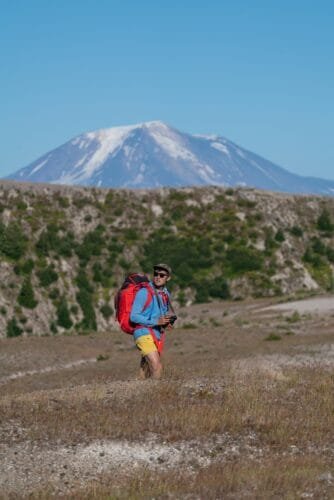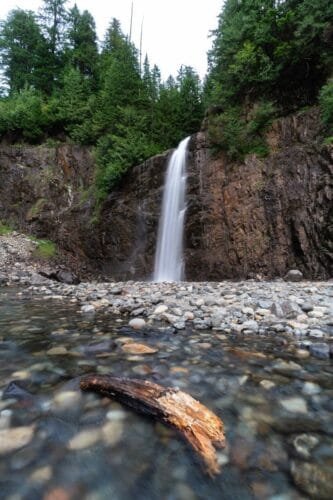For Workshop Leaders
Nature First Recommendations
Workshop Leaders, you CAN commit to the Nature First Principles
We understand that following the Nature First Principles might seem like an impossible feat for a full-time or part-time nature photography workshop instructor. Someone recently said to us that “preserving areas while also trying to earn a living with nature photography workshops are two conflicting ideas.” We can relate to this sentiment as it was something we grappled with and have thought deeply about at Nature First.
Making a living as a professional photographer who depends on workshop income can be incredibly difficult. As competition increases every year, workshop instructors have had to find ways to differentiate themselves to compete. There is a strong impulse to take people to beautiful but delicate areas that cannot sustain the impacts associated with visitation – in fact, many of us used to do that until we saw the negative impacts that we were causing.
We believe there are alternative approaches that not only help differentiate you as a photographer but also allow you to adhere to the Nature First Principles.
 For starters, successful workshop leaders must do much more than just provide a great location. Here’s a list of things you can (and should) teach students that are not dependent on the location:
For starters, successful workshop leaders must do much more than just provide a great location. Here’s a list of things you can (and should) teach students that are not dependent on the location:
- New photography techniques
- Philosophical approaches to the craft (such as slow photography, mindfulness, etc.)
- How to see great compositions (this is perhaps even more rewarding for students in locations that are not iconic or exceptional)
- Seeing with unique vision
Most participants will agree that the above takeaways are much more valuable, in the long run, than visiting any iconic location.
Leading workshop students to rare locations, or worse, those that cannot handle a great deal of visitation, exacerbates a reality made worse by social media. And “Everyone else already takes workshops to these places, so why does it matter?” is an argument that only perpetuates the cumulative, long-term damage and negative impact to our natural world. If a location is already on the map and set up to handle large amounts of visitation, it might feel ethically valid to take a workshop there. On the other hand, if the location is steadily deteriorating due to increased visitation, a re-evaluation is needed.
Here are some questions you can ask yourself before taking groups to a particular location:
- What does this location offer from a teaching perspective that other locations do not?
- Has there already been a significant impact to the location, and will future increased visitation have more impact?
- If I take groups to this location, will they also be compelled to bring more people here and, therefore, further the negative impact to the location?
- Thinking forward 15 years and seeing this location “ruined” for other people, is the personal gain you obtained greater than seeing it irrevocably changed?
Here are some other things to consider as a workshop leader who is wrestling with the idea that you must take someone to an iconic location that cannot sustain visitation:
- How else can I teach my students?
- How else can I make a living providing these services without impacting locations?
- What other models of monetization exist that could have the same financial impact and reduce location impact?
- These locations provide you with financial sustainability. How can you give back to these places through volunteering, advocacy, or educating others on the fragility of them?
- How else can I market my workshop to potential students without the draw of an iconic photograph or location? Suggestions include focusing on what will be learned, what the experience will be like, and how one’s photography will be improved.
- Can you focus on a general area instead of a specific location? For example, it’s easy to get excited about a place like Death Valley or Colorado in the autumn without implying or suggesting certain locations within those places will be visited.
- How can you adhere to and appeal to conservation ideals in your marketing to attract more students without compromising specific locations?
 Studying how some prominent photographers have differentiated themselves from the pack by offering non-location dependent offerings could help other photographers think about other approaches to offering workshops. A few examples are:
Studying how some prominent photographers have differentiated themselves from the pack by offering non-location dependent offerings could help other photographers think about other approaches to offering workshops. A few examples are:
- Guy Tal and Michael Gordon offer workshops focused on philosophical learning, natural history, visual communication, and post-processing.
- Colleen Miniuk offers workshops focused on creativity, artistry, and a personal connection to your work while infusing writing and other creative pursuits.
- David Kingham and Jennifer Renwick offer more personalized outings with a focus on individual creativity as opposed to capturing images from locations that cannot sustain high volumes of traffic.
- John Barclay offers workshops that teach a more contemplative style of photography, blending mindfulness with personal vision.
Obviously, some of these photographers are taking people to amazing locations that are popular; however, the focus is not on the location. The focus is on something else that can help people improve their photography and creativity. As the primary focus of a workshop shifts away from the destination and moves towards creativity, learning, and personal, student demands and expectations shift also. Believe it or not but many students are hungry for this sort of workshop offering, having seen places decimated over the past several years of abuse from our field.
We always encourage workshop leaders to share the Nature First Principles with your workshop students and explain the historical impacts to popular locations you once enjoyed. This is an opportunity to discuss the ethical responsibilities for photographers and to slow or prevent future impact.
Based on the article “Photography Workshops and Nature First Principles” by Jennifer Renwick and Matt Payne. Photographs by Alex Kessock.
